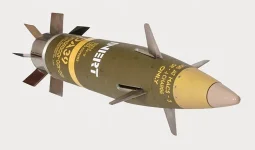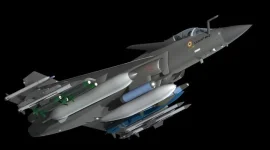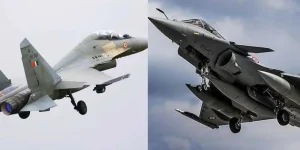Prominent headlines have recently celebrated the entry of Indian manufacturing firms into the high-stakes arena of global commercial aviation.
With Godrej Aerospace securing agreements with Pratt & Whitney for turbine components and Azad Engineering manufacturing essential parts for Rolls-Royce jet engines, the prevailing narrative suggests India is on the verge of becoming an aerospace superpower.
These manufacturers are now producing sophisticated components that power the massive aircraft of Boeing and Airbus worldwide.
While these offset agreements and supply chain inclusions undoubtedly generate employment, train machinists in advanced skills, and infuse over ₹10,000 crore annually into the local economy, they tell only part of the story.
However, looking beyond the impressive announcements reveals a more complex reality: these achievements do not necessarily equate to technological sovereignty.
Instead, they often represent highly restricted subcontracts where Original Equipment Manufacturers (OEMs) such as GE, Rolls-Royce, and Pratt & Whitney maintain absolute control. These global giants dictate every aspect of production, from the raw metal ingots used to the specific calibration of tools.
This strict oversight effectively stifles local innovation and prohibits reverse engineering, ensuring that Indian firms remain efficient manufacturers rather than becoming independent design powerhouses.
In a sector where a single engine design, such as the GE9X or Trent XWB, represents billions of dollars in intellectual property (IP), these partnerships are frequently portrayed as mutual technological growth.
However, for India’s vision of Atmanirbhar Bharat, they present a paradox: they bring significant economic activity but offer little in the way of deep technological transfer.
The industry operates on a "build-to-print" model, where local companies add value through labour and precision rather than through the creation of new intellectual property.
It is easy to be captivated by the excitement surrounding these developments.
For instance, when Hyderabad-based Azad Engineering Ltd. announced its contract in February 2025 to manufacture critical engine parts—specifically high-precision rotors and casings for the Pearl 15 engine—for Rolls-Royce, its stock value rose by 15%. Industry observers quickly labelled it a milestone for Indian manufacturing.
Similarly, a July agreement between Godrej Aerospace and Pratt & Whitney (a division of RTX) to produce complex structural components at its Mumbai facility is set to create 500 jobs and build expertise in specialised fields like CNC machining and heat treatment.
These are not isolated events; following supply chain disruptions in the West, major OEMs including Airbus and Collins Aerospace have directed approximately $2 billion in orders to Indian suppliers since 2023.
The tangible benefits of these collaborations are undeniable. India is cultivating a workforce capable of working with aerospace-grade tolerances, where accuracy is measured in microns.
This has also spurred growth in ancillary sectors, such as the production of heat-resistant alloys by Mishra Dhatu Nigam, contributing to India’s $2.6 billion defence and aerospace export figures.
For companies like Tata Advanced Systems or Dynamatic Technologies—which manufacture fan blades for GE—this represents a vital entry into the $100 billion global engine market.
Yet, unlike the government-to-government deal for the GE F-414 engine which promises some technology transfer to Hindustan Aeronautics Limited (HAL), these private sector deals are strictly precision subcontracts. Indian companies execute existing blueprints; they do not create them.
Global OEMs are protective of their proprietary technologies, which are worth trillions of dollars. Contracts are heavily guarded by non-disclosure agreements and IP restrictions that forbid any deviation from the plan. Improving a blade's angle for better efficiency or attempting to adapt a composite fan for local use is legally impossible.
As an engineer from a Tier-2 supplier in Bengaluru noted, their role is confined to following the provided CAD files and verifying materials using the OEM’s equipment, with innovation limited strictly to speeding up the production process.
This dependency extends to the very beginning of the supply chain. Essential raw materials, such as titanium sponge imported from Russia or superalloys from Special Metals, often arrive pre-certified to avoid any risk of contamination.
Even the manufacturing tools—specialised jigs and fixtures—are frequently proprietary and leased under strict audits to prevent unauthorised replication.
Quality control is equally centralised; experts from companies like Pratt & Whitney are often stationed on-site for inspections, while Rolls-Royce’s supplier programmes demand absolute perfection, with the threat of contract termination for quality failures.
Such caution is driven by safety rather than paranoia, in an industry where counterfeit parts can have catastrophic consequences. A 2024 Federal Aviation Administration (FAA) investigation into unapproved parts highlighted that even a single defective blade could endanger a flight.
For India, the result is a manufacturing sector that is highly skilled at execution but starved of research and development (R&D) opportunities. This gap is evident in the struggles of the indigenous Kaveri engine programme. Despite decades of effort and over ₹2,000 crore in investment, the engine has not yet powered a fighter jet.
However, open-source developments indicate a pivot: the "Dry Kaveri" variant is now being adapted to power the stealthy Ghatak Unmanned Combat Aerial Vehicle (UCAV), suggesting a shift towards achievable milestones rather than immediate manned flight.
The illusion of rapid progress persists because it is commercially and politically attractive. The government highlights global integration, and companies celebrate their rising stock prices.
Yet, without achieving technological sovereignty, this success remains fragile. If global OEMs shift to new technologies—such as 3D-printed blades or hydrogen propulsion—Indian manufacturing lines, without the ability to design their own solutions, risk becoming obsolete overnight.








